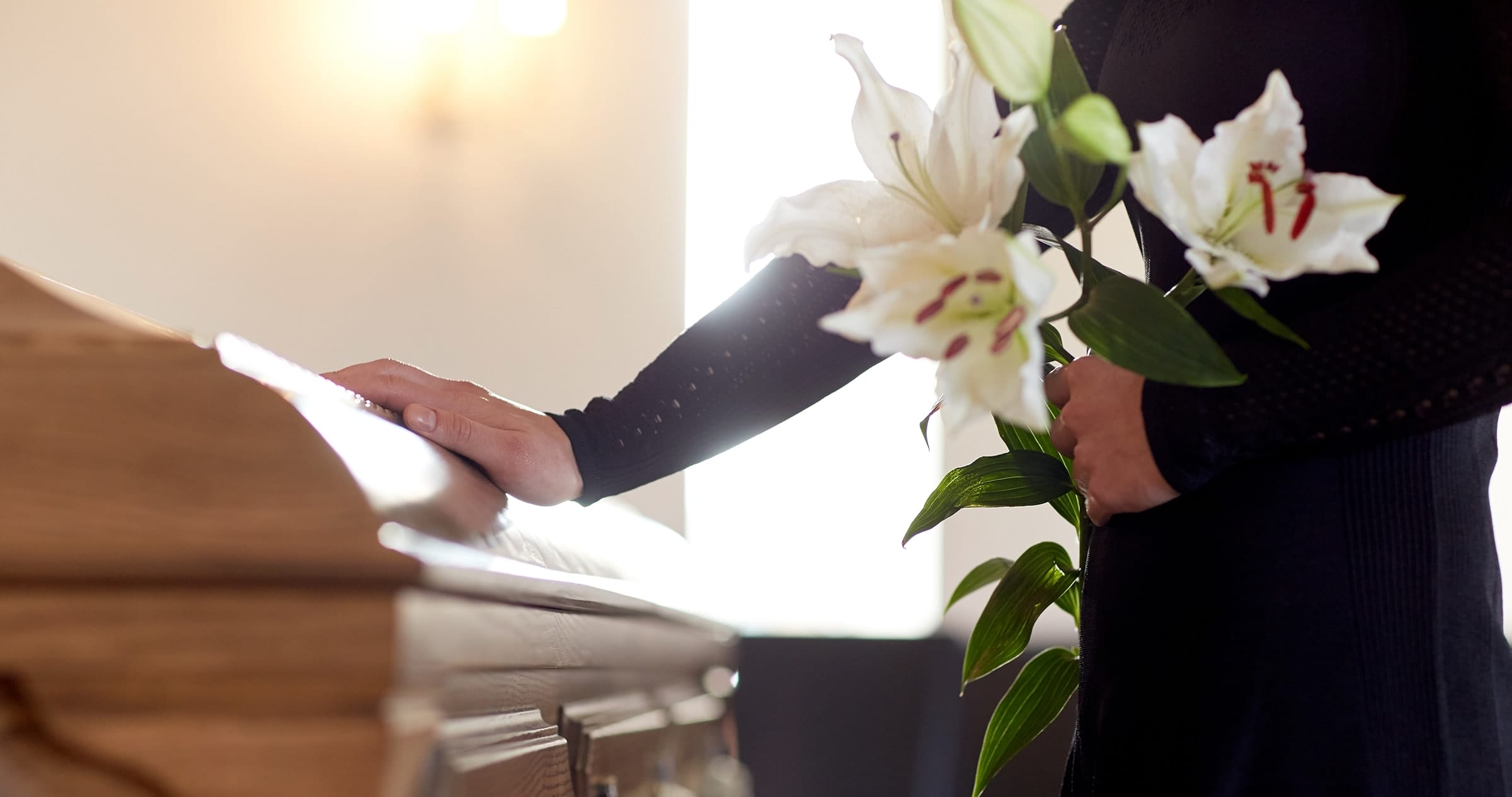

October 9, 2023
Need help designing a funeral program? When a loved one passes away, holding a memorial service for family and friends to remember them is usually a priority. One of the nicest and most convenient ways to provide meaningful information about the deceased is by creating a beautiful tribute on a funeral program.
These convenient small booklets or flyers not only provide relatives and friends with valuable information, but they can be lovely memorials themselves when thoughtfully created.
Funeral or memorial service programs are paper products created to remember the deceased at a formal service that may be held at a funeral home, church, graveside, or other location where family and friends may gather.
Many funeral programs are constructed with a single flyer that is folded over to create a front and back cover. Other funeral program printing jobs may be lengthier and require a booklet construction. A booklet is made up of two or more pages bound in the center with saddle stitching utilizing staples.
Those creating a funeral program should consider a few aspects before putting this physical tribute together.
Funeral programs typically contain three main types of content: basic information about the deceased, personal or more intimate details about the deceased, and specifics about the services or memorials. But within each category, a wide range of content can be included to personalize the program to meet the needs of the family and friends attending as well as fulfill any last wishes for communication about a loved one’s life.
The first and most important category of content to prioritize on a program used at a funeral or memorial service is similar to the information regularly found in an obituary.
The logistical details of the service should be noted prominently on the funeral program so attendees can find the information at a glance. Common locations to print this key information are on the front and back covers or at the end of the service order.
Additional personal details can be included in a funeral program in some situations. If space in the program is limited, much of this information can be relayed to attendees during the service itself.
One way to bring positive feelings to an otherwise somber occasion is to include photographs in the funeral program printing plan. Soliciting pictures from friends and family members can provide ample resources while also offering those grieving an opportunity to think about better times before their loved one passed away.
Extra photos can be brought to the memorial service and displayed for guests to view and reminisce over, and a few select ones can even be enlarged into a larger print or poster as well. One of the most common methods that families include a photo in the programs is by selecting a beautiful formal picture that represents their loved one in the prime of their life and health to use as the main cover image of the program. Often, the same photo is used in the formal obituary as the primary picture on the program.
Families sometimes choose to present two or more pictures of their loved one in the program, representing different time periods or ages in their life: as a young child, teen or youthful age, as a young parent and a photograph representative of their older years. This strategy is especially comforting to those who knew them in differing stages of their life and may only hold memories of them in a specific stage or age.
But the most important aspect of including photographs in your program is to be sure that photos are high-quality so they don’t appear blurry when printed.
1 Contact close family and friends to assist. This is a big project, and it is easy to overlook key information during this stressful time.
2 Collect basic information. Speak directly with immediate family members and consult resources like birth certificates or marriage licenses to confirm important dates, times and places before including the information in the program.
3 Consider the photography you might want to include and solicit photos from trusted family members. Any pictures or content you are thinking about including in the program should be double-checked by someone close to your loved one.
4 Decide on the size and type of program you want. A flyer is excellent for a shorter program while a longer booklet may be necessary if extra details like a complete obituary, song lyrics, or a handful of photographs are part of the program.
5 Stay in contact with the funeral home or the memorial service business. Make sure that you have all service information correctly represented and that the details are included accurately in the program. They may offer a template or program outline for you to follow if one is needed.
6 Work with a professional printer. A quality printer like Publishing Xpress can help you with quick funeral program printing so you don’t have to worry about meeting a fast deadline that having a memorial service within a few days often requires.
© 2024 Publishing Xpress. All Rights Reserved.